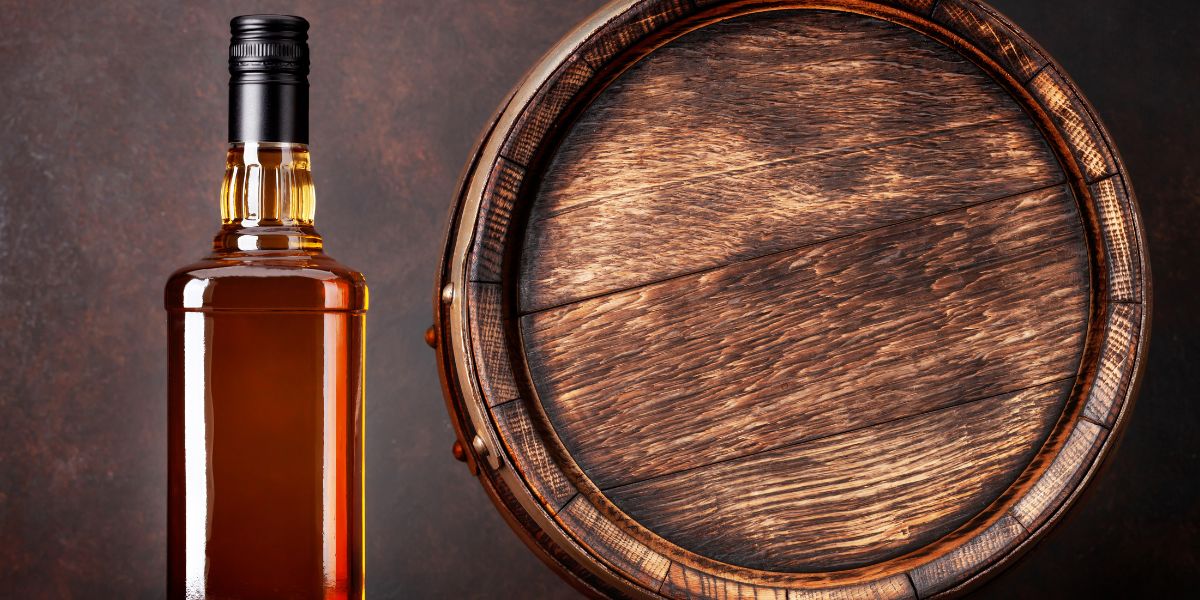
You may be savoring a glass of bourbon, but have you ever wondered about the intricate process behind its creation? From the selection of grains to the charring of oak barrels, each step in distilling this beloved spirit plays a crucial role in shaping its rich flavors and character. So, as you sip on that smooth bourbon, consider the meticulous craftsmanship involved in every drop, elevating it from a simple drink to a true work of art.
Bourbon Ingredients and Mash Preparation
To begin crafting bourbon, you gather the essential ingredients and prepare the mash, a crucial step in the distillation process. The key components needed are corn, rye, barley, and water. Corn provides the sweetness, rye adds spiciness, and barley brings enzymes necessary for fermentation.
The first step involves grinding the grains into a coarse powder. Then, you mix them with water to form the mash. This mixture is heated to convert the starches into sugars, creating a fermentable liquid.
After the mash is cooked, it's transferred to fermentation tanks. Here, yeast is added to kickstart the fermentation process. The yeast feeds on the sugars, producing alcohol and carbon dioxide. The fermentation typically lasts around three to five days, allowing the flavors to develop. Once fermentation is complete, the liquid is ready for distillation.
Preparing the mash correctly is vital as it lays the foundation for the flavors that will develop during fermentation and distillation. Each step is crucial in creating a high-quality bourbon with a well-balanced taste profile.
Fermentation and Distillation Process
During fermentation and distillation, yeast transforms sugars into alcohol, a key step in the bourbon-making process. Once the mash is ready, it's transferred to fermentation tanks. Yeast is added to the mash, where it begins the fermentation process. Yeast consumes the sugars in the mash, converting them into alcohol and carbon dioxide. This fermentation stage typically lasts around three to five days, resulting in a liquid with alcohol content known as 'distiller's beer.'
After fermentation, the distillation process begins. The distiller's beer is transferred to the still for the first distillation, known as the 'stripping run.' In this step, the liquid is heated, and alcohol vapors rise through the still, where they condense back into liquid form. The resulting product, known as 'low wine,' is then distilled a second time in a spirit still to increase the alcohol content and refine the flavors.
Once the distillation is complete, the distilled liquid, now known as 'white dog' or 'new make spirit,' is ready for the next stage of the bourbon-making process, aging in charred oak barrels.
Aging in Charred Oak Barrels
In the bourbon-making process, the distilled liquid is aged in charred oak barrels to develop its flavor profile and color. Once the clear liquid is poured into the barrels, a transformation begins. The charred oak barrels play a crucial role in shaping the final taste of the bourbon.
As the bourbon ages in the barrels, it starts to interact with the wood. The charred layer on the inside of the barrel acts as a filter, removing impurities and providing the bourbon with unique flavors. The wood also imparts caramel, vanilla, and spice notes to the liquid, enhancing its complexity.
Moreover, the aging process allows the bourbon to mellow and smooth out any harsh edges, resulting in a more refined taste. The color of the bourbon deepens as it absorbs compounds from the oak, giving it a rich amber hue.
Ultimately, the time spent in charred oak barrels is essential for creating the distinctive characteristics that bourbon enthusiasts love. The aging process is where the magic truly happens, turning a simple distilled liquid into a complex and flavorful spirit.
Bottling and Enjoying Bourbon
Once the bourbon has reached its desired level of maturity in the charred oak barrels, the next step is the meticulous process of bottling and savoring this exquisite spirit. The bourbon is transferred from the aging barrels to stainless steel vats for blending. This step ensures consistency in flavor profile across different batches.
After blending, the bourbon is filtered to remove any remaining wood particles and then diluted with water to achieve the desired proof. The spirit is then carefully bottled, corked, and labeled. Each bottle is a culmination of years of craftsmanship and tradition.
When it comes to enjoying bourbon, there are a few key things to keep in mind. First, pour yourself a measure of bourbon into a clean glass. Take a moment to appreciate the color and aroma. Then, take a sip and let the flavors linger on your palate. Some prefer to add a splash of water or a few cubes of ice to open up the flavors even more. However you choose to enjoy it, savor the complexity and richness of this iconic American spirit.




